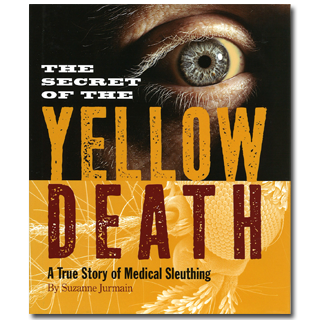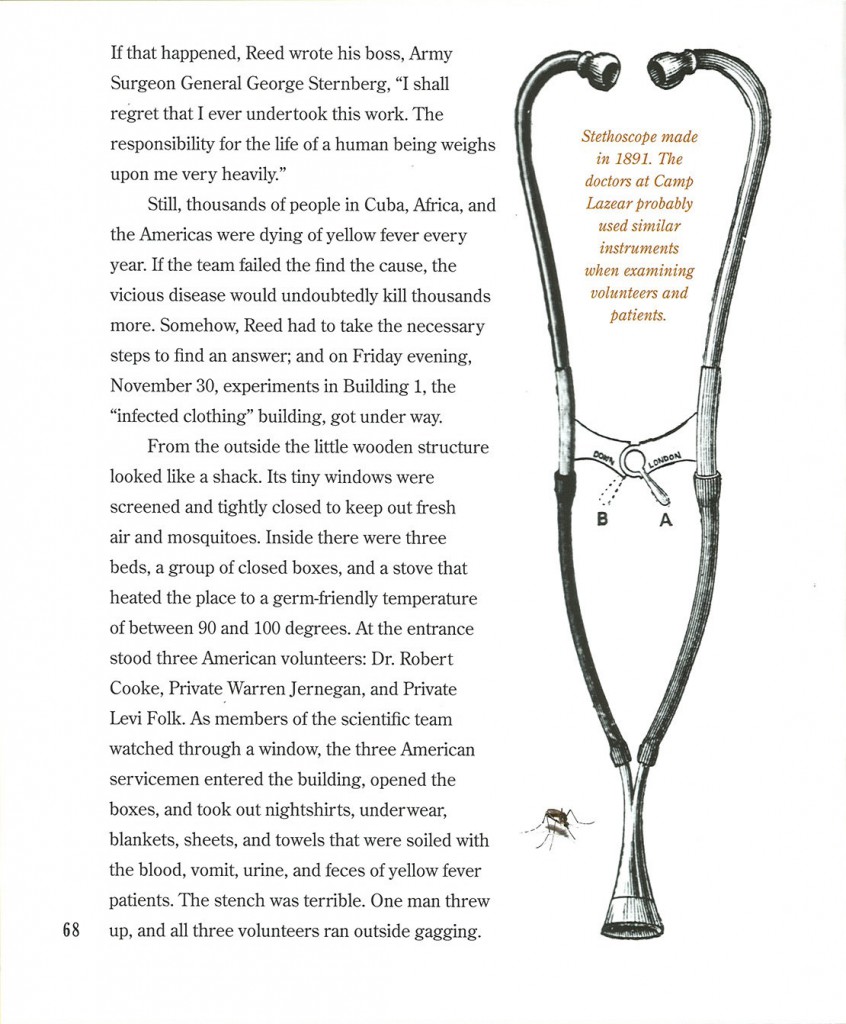
A FEW OTHER EVENTS FOR
JUNE 18:
- Happy birthday Pat Hutchins (The Wind Blew), Chris Van Allsburg (The Polar Express), Vivian Vande Velde (Heir Apparent), Connie Roop (Keep the Lights Burning, Abbie), Angela Johnson (Toning the Sweep).
- It’s the birth date of Pam Conrad (1947-1996), The Tub People.
- It’s Go Fishing Day. Read Go Fish by Mary Stolz, illustrated by Pat Cummings; Going Fishing by Bruce McMillan; Piggy and Dad Go Fishing by David Martin, illustrated by Frank Remkiewicz; and Gus and Grandpa Go Fishing by Claudia Mills, illustrated by Catherine Stock.
On June 18–20, 1900, a young visionary doctor, Major Walter Reed, finished his preparations for a trip that would make him famous. Then from June 21–24 he traveled on the U.S.S. Sedgwick from New York to Cuba. Although Reed had long anticipated the trip because he wanted to do something that would “alleviate human suffering,” at first he found that he was simply throwing up from seasickness or, as he described it, “feeding the fishes.”
In The Secret of the Yellow Death: A True Story of Medical Sleuthing, Suzanne Jurmain presents Reed’s journey to Cuba as head of a team of four doctors to locate the cause of yellow fever. Reed had prepared himself as much as possible for this trip and went with several scientific theories to test. One of those had been advanced for almost twenty years by Cuban doctor Carlos Finlay: He believed that yellow fever was carried by mosquitoes and caused by a bite from one. Most scientists laughed at this idea; Reed considered it one of many possibilities.
In a work of nonfiction that reads like a medial thriller, Jurmain takes readers step by step through the work of these doctors. She shows how they set up camp and began testing for possible causes of the yellow-fever epidemic that had broken out in Cuba. The team had difficulty making progress; nothing that they tested seemed to be a cause. Then they began to focus on mosquitoes. One of the doctors allowed himself to be bitten by what might be an infected mosquito—and he came down with the dreaded disease. Reed cabled anxiously, “Did the mosquito do it?” Later, Reed’s collegue, Dr. Jesse Lazear, became a guinea pig in his own experiments involving mosquitoes and yellow fever, and at the age of thirty-four paid the ultimate sacrifice of his own life in exchange for scientific knowledge.
Jurmain brings the people and the events of 1900 vividly to life. Readers learn about scientific experimentation and proof. And more than anything they see how much of a sacrifice had to be made by doctors to bring about an understanding of a terrible disease. The bravery and tenacity of Reed and his colleagues forms the backbone of an amazing story.
This book works brilliantly with Laurie Halse Anderson’s Fever and Jim Murphy’s An American Plague. It reminds all of us just how exciting narrative nonfiction can be.
Here’s a page from The Secret of the Yellow Death:
Originally posted June 18, 2012. Updated for .














This is a fantastic story and I’m so glad someone has written it! I was born and raised on this portion of oral history since I was from Memphis, Tennesee, where the worst epidemic of yellow fever broke out, kliling one out of every one of my ancestors. It also led to the defeat of Napoleon’s army. as I wrote in OPEN THE DOOR TO LIBERTY, where Toussaint L’Ouverture made use of this seasonable event.